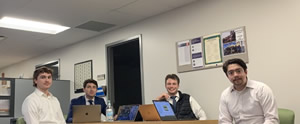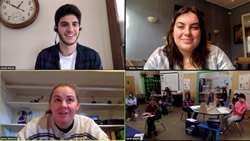
Senior Capstone Projects (2020-2021)
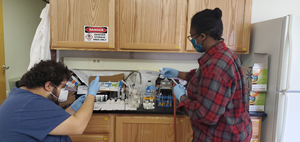 Macro solutions to micro problems: Exploring Biological Degradation of Endocrine
Disrupting Chemicals Commonly Found in Wastewater
Macro solutions to micro problems: Exploring Biological Degradation of Endocrine
Disrupting Chemicals Commonly Found in Wastewater
Ruthann Richards & Mateo Schwartz-Torres (2021)
Detectable concentrations of pharmaceuticals, pesticides, personal care products, and microplastics are ubiquitous in surface waters around the globe. Collectively, these pollutants are called emerging micropollutants (EMP). This project used white rot fungi, algae, and bacteria to evaluate biological remediation of three EMPs, triclosan, atrazine, and ketoprofen, found in sewage effluent. Experimental results were inconclusive due to instrumentation detection limits, but fungi and algae were able to grow in the presence of contaminants.
Paper is not available. For information, please contact the ESS Program Director.
Ben Burns, Teddy Heroux, Jack Lipson & JC Mueller (2021)
This project sought to measure the adoption of residential energy efficiency in Saratoga County. Data was collected through eleven interviews with local stakeholders and over five hundred survey responses. We found significant disparities in adoption and engagement of energy efficiency between locations and income groups in Saratoga County. We propose state-funded programs to increase community education and outreach to maximize the residential energy efficiency in Saratoga County.
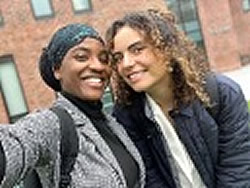 Environmental Justice is Exhausting: 5 Decades of Air Pollution at Ezra Prentice Homes
in Albany New York
Environmental Justice is Exhausting: 5 Decades of Air Pollution at Ezra Prentice Homes
in Albany New York
Haja Bah, Saima Hannan, Sophia Livecchi (2021)
Our case study research worked to better understand the historical and more contemporary environmental justice issues faced by the residents of Ezra Prentice Homes, a predominately Black, low-income community of color located in the south end of Albany, New York. Through narrative and archival analysis, and purposeful sampling we conducted semi-structured interviews with a diversity of stakeholders from both within and outside of this marginalized community.
Paper is not available. For information, please contact the ESS Program Director.
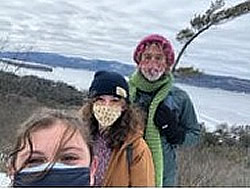 Diversity, Equity, and Inclusion in the Adirondack Park
Diversity, Equity, and Inclusion in the Adirondack Park
Olivia Berson, Andres Durante & Lucy Janovitz (2021)
We investigated diversity, equity, and inclusion in the Adirondack Park region of New York State. While the park is free and open to the public, not everyone who wants to access the Park has the ability to do so. Our research found that many programs and organizations are working to increase diversity and inclusivity in the park through education initiatives, more inclusive staff hiring and training, and efforts to make the park a more welcoming space for Indigenous communities in the region.
Jonah Amron, Parker Heuer & Jenny Norcross (2021)
Environmental Education (EE) is a form of teaching that aims to increase students' ecological literacy, which is a person's overall understanding of the biophysical environment and its associated problems. We investigated the efficacy of online EE during a global pandemic on pro-environmental knowledge, attitudes, and behavior changes of fifth grade students. Our research showed online EE enhanced pro-environmental attitudes and behaviors as well as awareness surrounding environmental issues. Experiential learning, involving hands-on, activity-based lessons, were the most effective tools for teaching online ecological literacy.
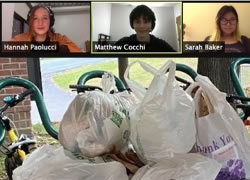 “Plastics-Free” Skidmore? A Feasibility Study of Skidmore College Going Single-Use
Plastics Free
“Plastics-Free” Skidmore? A Feasibility Study of Skidmore College Going Single-Use
Plastics Free
Sarah Baker, Matt Cocchi & Hannah Paolucci (2021)
We investigated the feasibility of Skidmore College reducing single-use plastic in a typical year. We looked into providing vending operations and Dining Services on campus with sustainable alternatives. We conducted a literature review, action and archival research, calculated per-item costs of commonly-used plastic items on campus, conducted semi-structured interviews, and distributed a campus survey. Going plastics-free offers multiple benefits for Skidmore, and we provide recommendations for college-wide implementation.
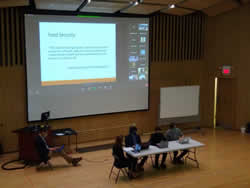 Food Resiliency and the COVID-19 Pandemic in New York’s Capital District
Food Resiliency and the COVID-19 Pandemic in New York’s Capital District
Sam Blumenthal, Taylor Goodell, Siddharth Nizamuddin & Lauren Winkler (2021)
The Covid-19 pandemic had negative impacts on food insecurity globally and in the United States and created operational challenges for food assistance organizations. We used literature reviews, reports from food assistance agencies, and semi-structured interviews to examine the innovations that food banks, food pantries, food non-profit organizations, and farms in New York’s Capital District have adapted to address the growing demand for their services.
Paper is not available. For information, please contact the ESS Program Director.
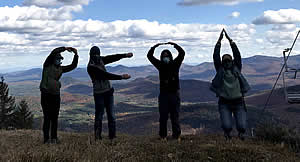 Yellow Snow Is the Least of Your Worries: The Presence and Persistence of PFOA on
Ski Hills in Upstate NY
Yellow Snow Is the Least of Your Worries: The Presence and Persistence of PFOA on
Ski Hills in Upstate NY
Jacob Adams, Gillian Brogan, Elle Ping & Sammi Smith (2021)
Perfluoroalkyl substances (PFAS) are detrimental to both human and environmental health. Many downhill ski waxes contain PFAS, as it reduces the friction between skis and snow. We collected soil, leaf, and snow samples from ski mountains in upstate NY to evaluate the presence and persistence of ski wax PFAS. Sample analyses could not sufficiently detect concentrations at or below the EPA threshold, and we could not draw definitive conclusions regarding ski wax PFAS in NY state.
Paper is not available. For information, please contact the ESS Program Director.
